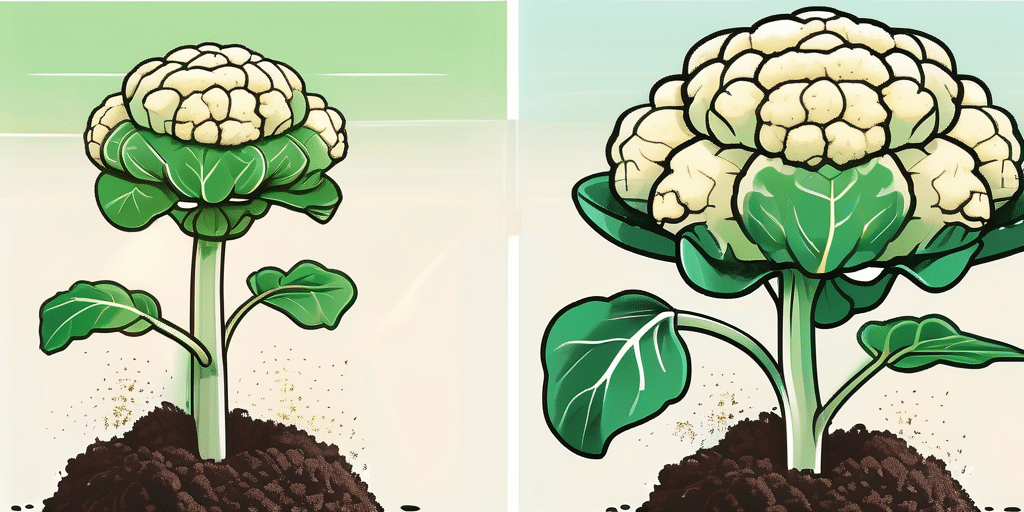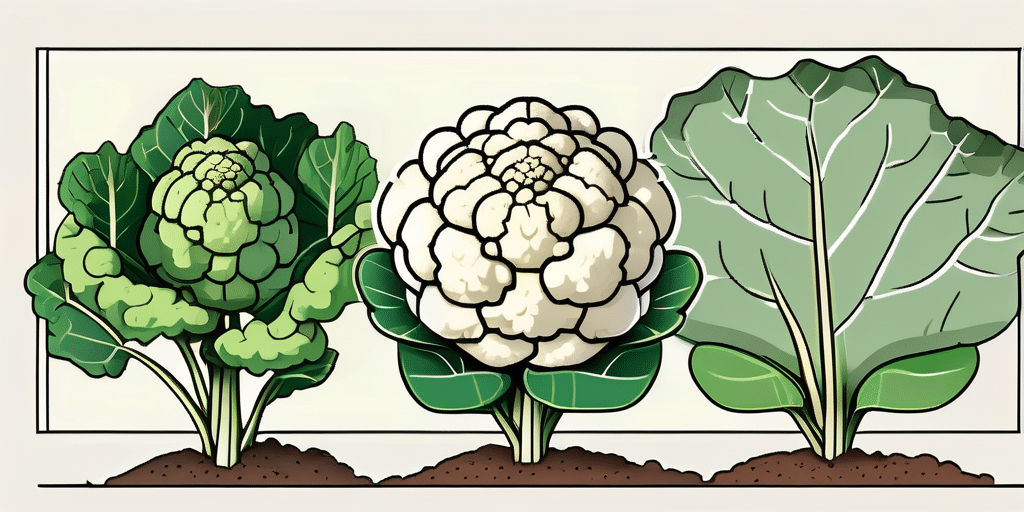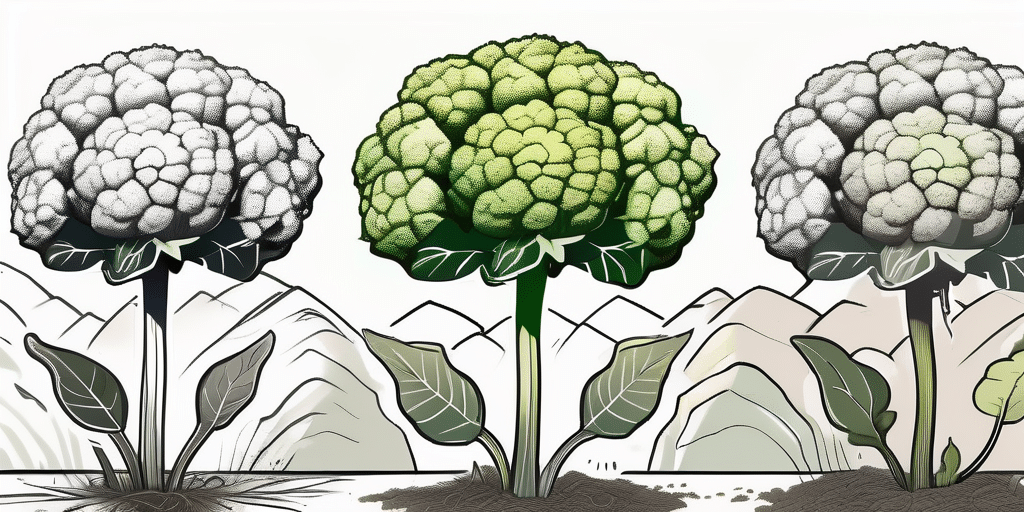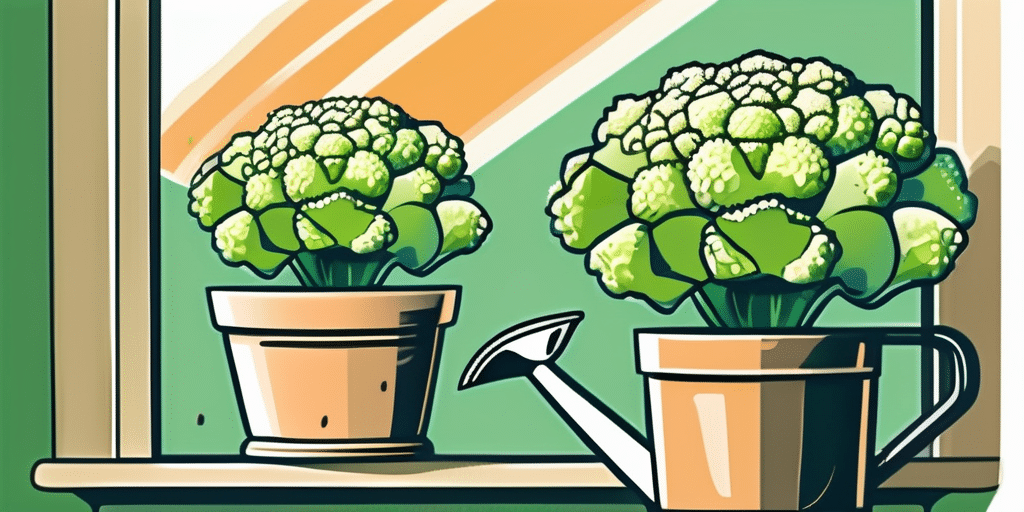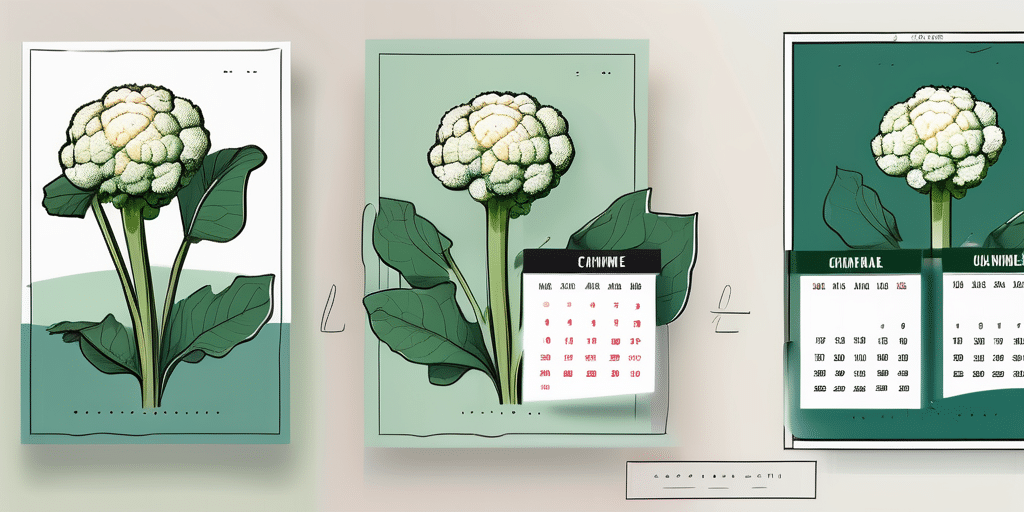Cauliflower is a nutritious and versatile vegetable that can be grown in Texas. If you are interested in growing self-blanching cauliflower in your own backyard, you’ve come to the right place! In this article, we will discuss the ideal climate and hardiness zones in Texas for growing cauliflower, when to plant, how to grow, and when to harvest this delicious vegetable. We will also address some commonly asked questions to help you have a successful cauliflower growing experience.
Climate & Hardiness Zones in Texas
Before you begin growing self-blanching cauliflower, it’s important to understand the climate and hardiness zones in Texas. The state of Texas has a diverse climate, with regions ranging from humid subtropical to arid. This variation in climate can affect the success of growing cauliflower.
Generally, cauliflower grows best in cool weather conditions, with a temperature range of 60 to 70 degrees Fahrenheit. It requires a minimum of 6 hours of direct sunlight each day. In Texas, areas with a milder climate, such as the Gulf Coast region and parts of the Hill Country, are more suitable for growing cauliflower.
When selecting cauliflower varieties for Texas, it’s important to choose those that are well-suited to your specific hardiness zone. In Texas, the USDA hardiness zones range from Zone 6b to Zone 9a. Check with your local agricultural extension office or consult gardening resources to determine the specific hardiness zone in your area.
It’s worth noting that Texas is not only known for its diverse climate but also for its rich agricultural history. The state boasts a wide range of crops grown throughout its various regions, from cotton in the High Plains to citrus fruits in the Rio Grande Valley. This agricultural diversity is a testament to the adaptability of plants to different climatic conditions within the state.
Furthermore, Texas is home to a unique phenomenon known as “Texas weather,” characterized by its unpredictability and extreme variations. From scorching hot summers to occasional winter freezes, Texas weather can pose challenges to gardeners and farmers alike. However, with careful planning and attention to local climate patterns, successful cultivation of crops like cauliflower is still very much achievable in the Lone Star State.
When to Plant Self Blanching Cauliflower in Texas
The timing of planting self-blanching cauliflower in Texas is crucial for a successful harvest. The ideal time to plant cauliflower in Texas varies depending on your location within the state and the specific hardiness zone you are in.
As a general guideline, cauliflower should be planted in Texas during the fall or spring seasons. In the Gulf Coast region, fall planting is preferred, while in central and northern parts of Texas, spring planting is recommended.
For fall planting, start seeds indoors 6 to 8 weeks before the last expected frost date. Transplant the seedlings into the garden when they are 4 to 6 weeks old and have developed a strong root system. Ensure that the soil temperature is consistently around 60 degrees Fahrenheit to promote healthy growth.
If you prefer spring planting, start seeds indoors 8 to 10 weeks before the average last frost date. Transplant the seedlings into the garden when they are around 6 to 8 weeks old, ensuring that the soil temperature has reached at least 50 degrees Fahrenheit.
How to Grow Self Blanching Cauliflower in Texas
Now that you know when to plant cauliflower in Texas, let’s explore some essential tips for successful growth.
Soil Preparation
Cauliflower thrives in well-drained soil rich in organic matter. Before planting, prepare the soil by removing weeds and incorporating compost or well-rotted manure. This will help improve the soil’s fertility and moisture retention.
Planting
Once your soil is prepared, it’s time to plant your cauliflower seedlings. Here are some step-by-step instructions:
- Choose a sunny location in your garden that receives at least 6 hours of direct sunlight each day.
- Ensure that the soil temperature is suitable for planting, as mentioned earlier.
- Dig holes that are slightly larger than the root ball of your seedlings, spacing them about 18 to 24 inches apart.
- Place the seedlings in the holes and gently firm the soil around them. The crown of the cauliflower should be level with the soil surface.
- Water the seedlings thoroughly to help them establish their roots.
Maintenance
Once your cauliflower is planted, it’s important to provide proper care and maintenance throughout its growth cycle. Here are some maintenance tips:
- Keep the soil consistently moist, but avoid over-watering, as cauliflower is susceptible to root rot.
- Apply a layer of mulch around the plants to help conserve moisture, suppress weed growth, and maintain a more even soil temperature.
- Fertilize your cauliflower plants regularly with a balanced organic fertilizer, following the manufacturer’s instructions.
- Monitor the plants for any signs of pests or diseases, such as aphids or fungal infections. Take appropriate measures, such as applying organic insecticides or fungicides, if necessary.
When to Harvest or Pick Self Blanching Cauliflower in Texas
Harvesting cauliflower at the right time is crucial to ensure optimal flavor and texture. The timing of harvest depends on the specific variety you are growing and the weather conditions in your area.
Generally, self-blanching cauliflower varieties are ready to be harvested when the heads reach a desirable size and have a firm texture. This usually occurs around 65 to 80 days after transplanting.
To check if your cauliflower is ready for harvest, gently squeeze the heads. If they feel solid and the curds are compact, it’s time to harvest. Avoid waiting too long, as over-mature cauliflower can develop a bitter taste.
Using a sharp knife or garden shears, cut the head from the stem, leaving a few outer leaves attached. Remove any leaves that are yellowing or damaged.
After harvesting, store your cauliflower in the refrigerator’s crisper drawer in a perforated plastic bag. This will help keep it fresh for up to a week.
Frequently Asked Questions
1. Can self-blanching cauliflower tolerate frost?
Yes, self-blanching cauliflower can tolerate light frosts, but prolonged exposure to freezing temperatures can cause damage to the heads. It’s best to protect the plants during frosty periods using row covers or other frost protection methods.
2. Are there any companion plants that benefit self-blanching cauliflower?
Certain companion plants can help deter pests or improve the overall health of self-blanching cauliflower. Some beneficial companions include onions, dill, celery, and chamomile. Avoid planting cauliflower near members of the cabbage family, such as broccoli or Brussels sprouts, as they can compete for resources.
3. Is it possible to grow self-blanching cauliflower in containers?
Yes, it is possible to grow self-blanching cauliflower in containers, provided that the containers are large enough to accommodate the plants’ root system and the soil is well-draining. Select compact varieties suitable for container gardening and ensure they receive adequate sunlight and regular watering.
4. How do I prevent cauliflower heads from turning brown?
Browning of cauliflower heads can be caused by various factors, including excessive exposure to sunlight or nutrient deficiencies. To prevent browning, ensure that your cauliflower plants receive sufficient shade during hot periods by providing partial shade or using shade cloth. Additionally, maintain a regular fertilization schedule to ensure the plants receive the necessary nutrients.
5. Can I save seeds from self-blanching cauliflower?
Yes, you can save seeds from self-blanching cauliflower. However, it’s important to note that cauliflower is a cross-pollinating vegetable, which means that the seeds may not produce plants identical to the parent. To save seeds, allow the cauliflower heads to fully mature until they turn yellow. Remove the heads from the plants, break them apart, and collect the seeds. Store the seeds in a cool, dry place for future planting.
Now that you have a comprehensive understanding of growing self-blanching cauliflower in Texas, it’s time to get started on your own garden! With the right planting timing, care, and maintenance, you’ll soon be enjoying delicious and nutritious cauliflower harvested from your very own backyard.
Join How to Grow Everything for More Gardening Success!
Ready to take your gardening skills to the next level? Subscribe for free to How to Grow Everything and learn how to build the garden of your dreams! Receive personalized gardening advice tailored to your Texas location, grow zone, and experience level. Our family is committed to helping you grow with the best gardening tips and special offers, all delivered directly to your inbox. No spam, just pure gardening gold. 100% free. Start growing your self-blanching cauliflower and more today!

